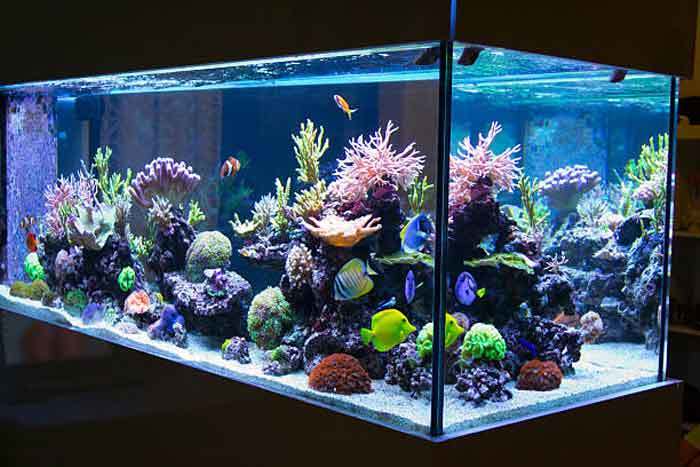Aquariums are one of the most popular interior decorations today because of their ability to keep beautiful fish. However, problems can occur, and care must be taken to avoid these again. For example, leaking is one of the problems you can encounter with aquariums.
Even though leaking water from an aquarium can be easily solved, it is necessary to find out the cause. This is necessary to avoid future problems. In the worst-case scenario, you may need to replace a single piece of glass in the aquarium.
How To Detect Water Leaks in an Aquarium?
The best way to detect a leak in your aquarium is by looking at the markings outside the glass. There is some sort of mark on the outside glass that indicates the amount of water that is actually in the tank. This way, you can easily check if the level has dropped or not.
Why Does My Aquarium Leak Water?
There are two main reasons water tanks run out of water: leaks and evaporation. Both are relatively easy to solve and usually do not affect the fish’s life. However, keep in mind that water loss also affects the chemical parameters of the tank, so water needs to be replenished quickly to avoid other kinds of problems.
Leaking Water in the Tank
If water is leaking from the water tank, there may be small cracks in the glass. In this case, the liquid level will gradually drop, just like evaporation. On the other hand, if the glass is cracked, the water will become saturated, which can be detected by checking the tank’s environment.
How to Repair a Leak in the Aquarium?
To repair a leaking aquarium, you first need to check the extent of the damage. If it is a small crack in the glass, it can be temporarily repaired with silicone. However, if the cracks are quite long, replacing the entire glass panel is better. In both cases, the tank will need to be emptied for repair.
Remember that it should be 100% neutral silicone for aquariums. If it is not, it may release toxic substances when it comes in contact with water, which may cause fish poisoning. Also, make sure that all repairs are done inside the box. This is important so as not to spoil the visual aesthetics.
![]()
Evaporation From Water Tanks
The tank will naturally lose liquid. This is because the lighting in the tank heats up the water surface, causing it to evaporate and lower the liquid level. Differences in ambient temperature can also cause this situation, with some areas losing water more easily than others.
In reality, water is heated and gradually escapes as it turns into gas. This phenomenon is more common in reef aquariums because of the relationship between temperature and light (both of which have very different parameters). Besides, those who use crank filters lose more liquid due to the tank’s structure.
How To Prevent Evaporation in an Aquarium?
Contrary to popular belief, a lid that seals the container is not the best option. This is because the liquid also needs air to supply oxygen. It prevents moisture loss, but bacteria and other components come into contact with the fish. As a result, the fish can quickly become poisoned or sick.
Evaporation in the aquarium is a process that cannot be completely eliminated. However, it can be mitigated by using other accessories. Some of the ways to do this are as follows:
- Purchase a self-filling system. This automatic system raises the water level again when it drops to a certain level.
- Buy an aquarium with thick glass. The larger the width, the harder it is to raise the temperature. If the glass is thin, it tends to get hot quickly.
- Keep only cold-water fish. By keeping fish adapted to cold water, you can significantly reduce evaporation.
Remember, if you run out of water, change the water as soon as possible to avoid any danger to the fish. If you keep paying attention to the needs and conditions of your fish, you can avoid potential problems.
